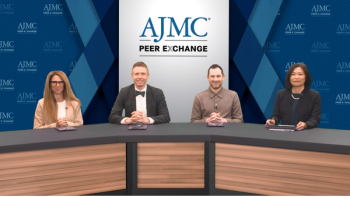
Panelists share their final thoughts on bispecific therapies in B-cell lymphomas based on insights from the 66th American Society of Hematology (ASH) Annual Meeting and Exposition 2024.

Panelists share their final thoughts on bispecific therapies in B-cell lymphomas based on insights from the 66th American Society of Hematology (ASH) Annual Meeting and Exposition 2024.

Panelists discuss key gaps in communication between academic and community centers regarding the use of bispecifics and strategies to bridge them as well as best practices for ensuring a smooth transition of care when patients move between settings.

Panelists discuss the benefits of implementing bispecific therapy programs in the community setting as well as factors influencing the decision to administer these agents at an academic center vs a community setting.

Panelists discuss best practices for successfully implementing a bispecifics program and overcoming logistical challenges.

Panelists discuss the most common logistical challenges encountered when implementing bispecific therapies in both academic and community settings.

Panelists discuss how step-up dosing protocols reduce cytokine release syndrome (CRS) risk in patients with high-risk disease and when modifications might be necessary as well as the incorporation of infection prevention strategies, including prophylactic antimicrobials, into management plans.

Panelists discuss key strategies for preventing cytokine release syndrome (CRS) and immune effector cell–associated neurotoxicity syndrome (ICANS) in patients receiving bispecific therapies for B-cell lymphomas.

Panelists discuss how real-world data on the incidence of cytokine release syndrome (CRS) and immune effector cell–associated neurotoxicity syndrome (ICANS) compare with clinical trial findings as well as the most critical patient-related risk factors for developing these toxicities.

Panelists discuss how comparative data from matching-adjusted indirect comparison (MAIC) analyses guide treatment decisions between bispecific therapies and the insights from MAIC results comparing epcoritamab and glofitamab that may influence therapy selection.

Panelists discuss key factors in deciding between monotherapy and combination approaches for bispecific therapies in follicular lymphoma (FL) and diffuse large B-cell lymphoma (DLBCL) as well as the potential for combination therapies to be more viable in certain B-cell lymphoma subtypes.

Panelists discuss how the sequencing of bispecific therapies in first-line vs later-line settings should be guided by factors such as disease stage, prior treatments, and patient-specific characteristics to optimize therapeutic outcomes.

Panelists discuss how several studies evaluating bispecific therapies in earlier lines of therapy for diffuse large B-cell lymphoma and follicular lymphoma suggest that patients with high-risk or relapsed/refractory disease are most likely to benefit from these treatments.

Panelists discuss how emerging data on odronextamab in diffuse large B-cell lymphoma suggest its potential to play a significant role in therapy, with promising results that may position it alongside or as a superior option compared with currently approved bispecifics.

Panelists discuss how exciting new data from ASH 2024 on bispecific therapies for B-cell lymphomas, including epcoritamab in diffuse large B-cell lymphoma, mosunetuzumab in follicular lymphoma, and odronextamab are shaping treatment algorithms by providing long-term follow-up data that could influence therapeutic strategies and patient management.

259 Prospect Plains Rd, Bldg H
Cranbury, NJ 08512
© 2025 MJH Life Sciences®
All rights reserved.
